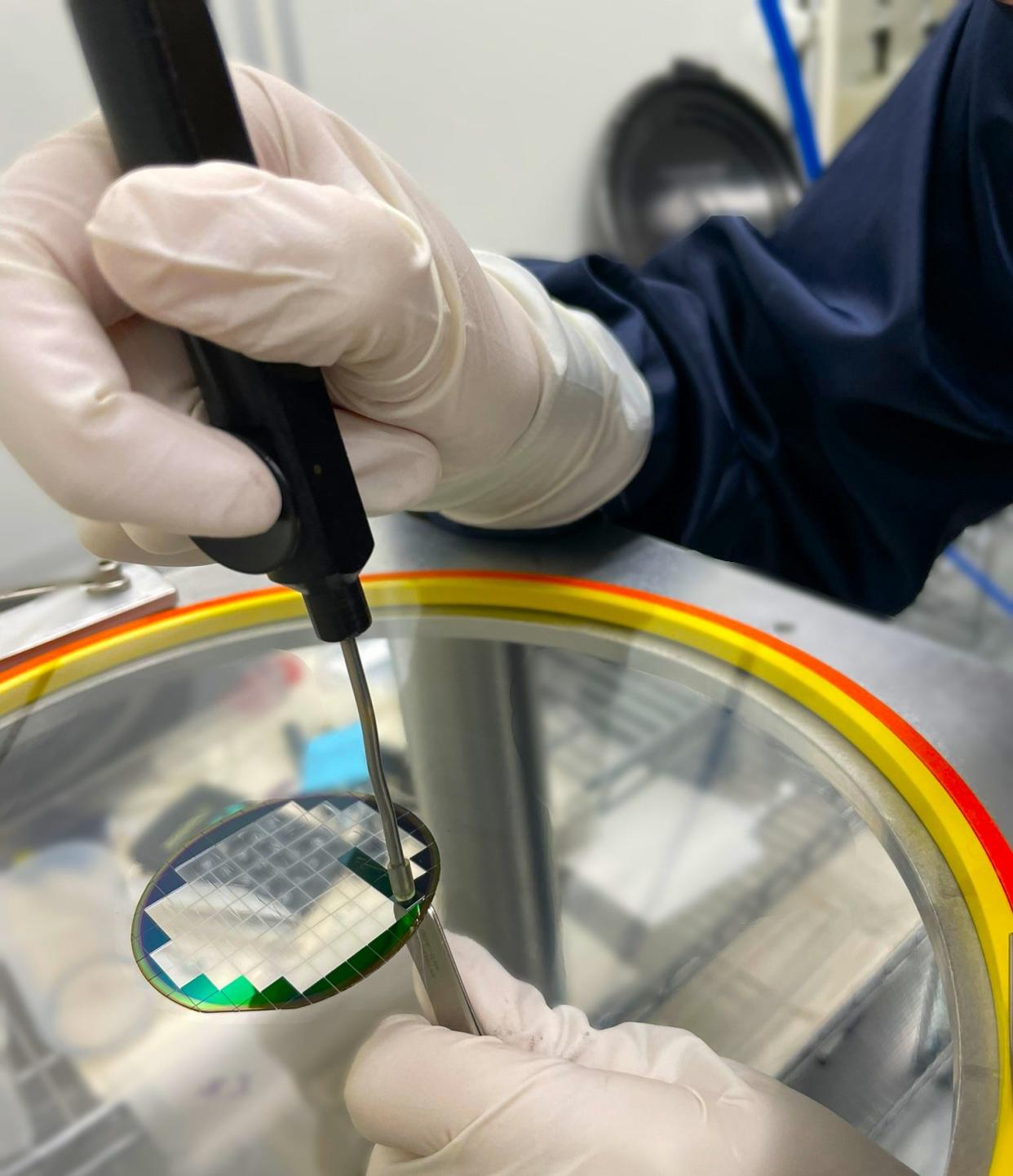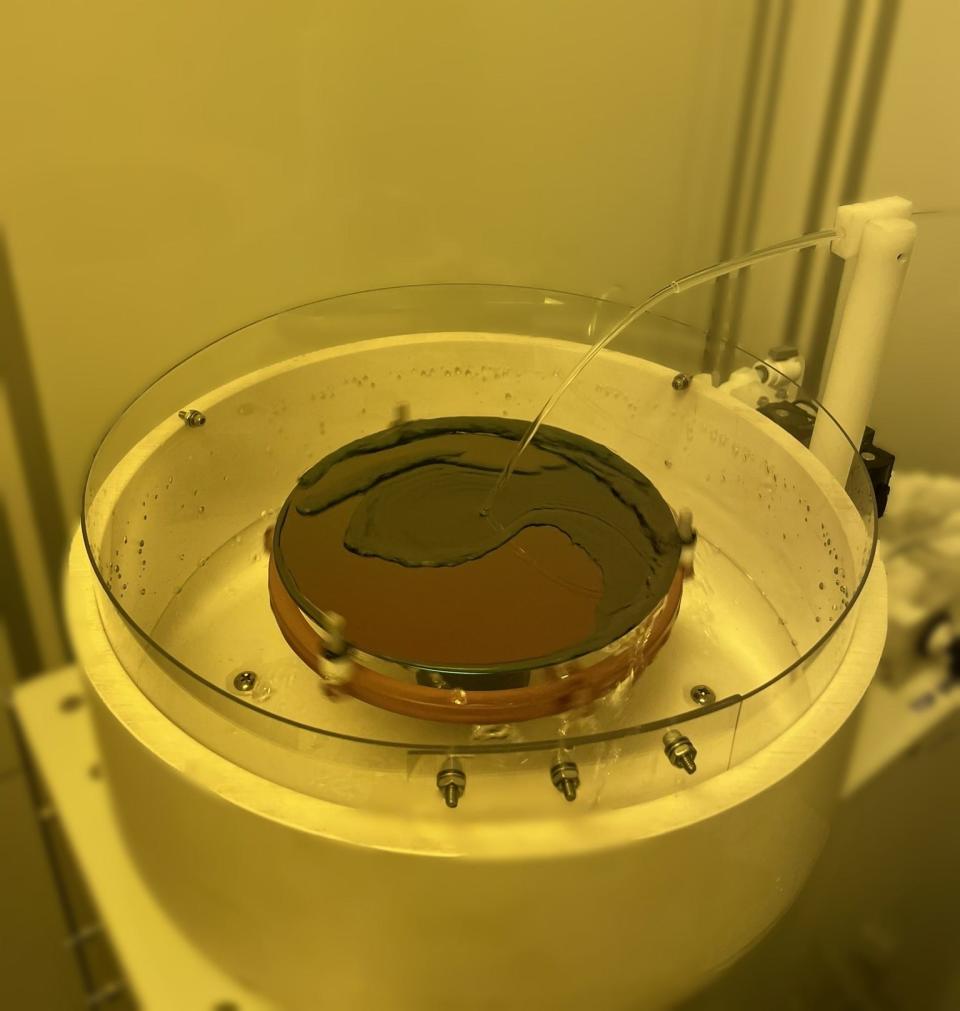'Staggering:' $150M high-tech semiconductor investment coming to Southern Indiana

Chicago area-based NHanced Semiconductors plans to invest $152 million in Monroe County to create 250 jobs with annual salaries averaging about $100,000.
Combined with other planned investments by Indiana University and businesses near Crane, local officials hope Monroe County and Bloomington can play a critical role in securing some of the more than $50 billion the U.S. government is making available to help bring semiconductor production back to the U.S. to bolster the domestic economy and national security.
NHanced Semiconductors President Bob Patti said jobs projections for the Bloomington facility, at 301 N. Curry Pike, which the company plans to lease from Cook Group, are conservative and he expects the plant to have closer to 400 employees by 2029.
In addition, Patti said NHanced is talking with many other companies that have expressed an interest in operating in the local facility.
“It’s not inconceivable that this site will eventually host as many as 1,000 high-tech jobs,” he told the Monroe County Council last week.

In the best case scenario, Patti the company would begin moving in equipment in April and start production in the third quarter of next year.
Local officials hope the plans by NHanced, combined with a recently announced investment of $111 million from Indiana University and related developments near Crane, can help diversify the local economy and set up Bloomington as a hub for research, development and production of components that are critical to the nation’s national security as well as the next generation of consumer technologies.
Jennifer Pearl, president of the Bloomington Economic Development Corp., said the NHanced project provides an “incredible opportunity for Monroe County, which is really evolving as an epicenter for innovation in Indiana.”
“We’re really seeing the development of an ecosystem here,” she said at the council meeting.
Pearl said the $150 million investment is one of the largest the BEDC team has seen in its over four years of working on projects, and the wages NHanced plans to pay are significantly higher than the area’s median household income of $54,000.
“This is especially critical because our local private sector hourly wages lag the Indiana statewide average,” she said.
Pearl said the semiconductor business also will help diversify the local economy and revitalize a former brownfield.
Patti said key positions in the facility will include engineers he hopes to recruit from IU, Purdue and his alma mater, Rose-Hulman Institute of Technology in Terre Haute. Engineers at the Bloomington facility can expect to earn between $150,000 and $200,000, he said.
Jeff Cockerill, a county attorney who last week presented to the council the company’s request for tax breaks, said the numbers provided by Patti “are pretty staggering.”
The county council unanimously approved the company’s request to be allowed to not pay any taxes on personal property for a decade. The project will occur in a tax increment financing district, which means the taxes that would have been collected over the decade would have been invested back into the district.
IU to invest $111 million in microelectronics
NHanced’s project comes on the heels of a $111 million investment announcement from IU, which plans to use those funds to hire faculty, add degree programs and upgrade laboratories and equipment.

Russ Mumper, vice president for research at Indiana University, said the institution plans to hire 25 new professors and hopes to obtain, in the next 12 to 18 months, accreditation from a U.S. Department of Defense agency for a secure research environment.
Mumper said that would set up IU with a distinctive opportunity to engage in research and provide students with access to work in high-paying, high-tech jobs that develop and manufacture components for industries as varied as consumer electronics, health care, deep sea exploration, defense and aerospace.
The application for a secure facility is being sponsored by Naval Systems Warfare Center Crane, and IU plans to work closely with the site and the 200 defense contractors supporting the installation.
Mumper said the university wants to allow its students to work closely with the employers and to get certifications necessary for them to get jobs after graduation. He said he expects the university’s increasing capabilities to attract even more private sector employers. In addition, he said, the university expects some of the students to launch startups, which also should enable more highly sought-after graduates to stay in Indiana.
While many of the companies here have a focus on national defense, Mumper said many also are developing technologies that have non-military applications ranging from health care to autonomous vehicles.
Geopolitics, the COVID-19 pandemic and supply chains

Patti said the semiconductor industry is expanding faster than the rest of the economy in part because the share of things that contain electronic components continues to grow.
The U.S. is seeing even greater growth because of the COVID-19 pandemic and geopolitical considerations, he said.
During the pandemic, many U.S. companies struggled to access their usual supply of computer chips — for anything from cars to laptops — because they were being made largely overseas, he said. In addition, the shortages reinforced federal legislators’ concerns about the brittleness of supply chains and America being dependent on foreign suppliers, especially in geographic areas close to U.S. adversaries.
“It really made people realize how fragile the supply chains are,” Patti said.
Those concerns nurtured the creation and passage of the CHIPS and Science Act, which, according to the Indianapolis Star, was passed in large part because of U.S. Sen. Todd Young, R-Ind., who recently visited the IU campus to spread awareness about the legislation.
CHIPS Act: Sen. Todd Young talks quantum computing at Indiana University
The bill passed the Senate with support from every Democrat and 17 Republicans. President Joe Biden signed it into law last summer.
Patti said the legislation has generated enormous interest from research facilities and manufacturers such as NHanced Semiconductors.
“It’s a repositioning in the world of where the factories are being built,” he said.
The federal dollars are needed, he said, because semiconductor development takes a lot of money up front.
While Indiana is “not exactly a mecca for semiconductors,” Patti said the state has a critical resource that many states lack: A steady stream of engineering graduates.
Traditionally, many of them leave after graduating because the state lacks opportunities for high-tech work. Patti said NHanced Semiconductors and other companies are hoping to change the minds of future graduates.
NHanced has a prototype assembly facility near Crane, which will help train people for the Bloomington facility. The company also operates a niche-market facility in North Carolina, where, Patti said, it makes semiconductors by hand in volumes in the tens, hundreds or low thousands. The parts are highly specialized, he said, and include parts for satellites. The Bloomington facility, however, will be semi-automated, and parts volumes will reach the hundreds of thousands.
Boris Ladwig can be reached at bladwig@heraldt.com.
This article originally appeared on The Herald-Times: $150M high-tech investment to diversify Bloomington economy

